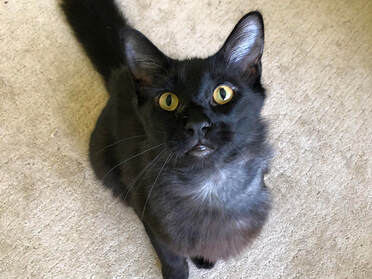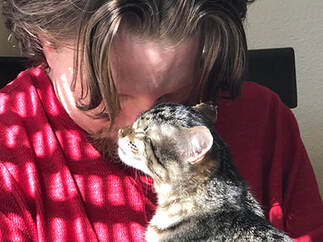
Imagine two movable satellite dishes capable of swiveling, capturing and amplifying sound! Now, imagine them in miniature. This is the purr-fect description of a cat’s most impressive and extraordinarily designed ears.
Blessed with hearing that far surpasses that of dogs and even humans, cats not only have the broadest range when it comes to detectable sounds, they can even hear lower and higher frequencies than either dogs or humans. Whereas dogs can hear frequencies between 67 hertz to 45,000 hertz and humans can hear between 64 hertz to 23,000 hertz, cats can hear frequencies between 45 hertz to 64,000 hertz.
As one of nature’s truly efficient species of hunter/predators, cats in the wild were equipped to be seen, not heard. Since they preferred being the hunter and not the hunted, they moved stealthily and swiftly in search of prey. This innate ability was deftly embedded in their DNA, thereby benefiting today’s kittens’ and cats’ elegant ease whenever they stalk and pounce -- whether it’s a fellow feline or a fun feline toy.
By utilizing more than 32 different muscles in their outer ears (humans have six!), cats can swivel their ears up to 180 degrees, giving them the capability to better track specific sounds. The very act of swiveling each ear not only improves their hearing by an additional 15 to 20 percent, it enables them to pinpoint the exact origin of that sound. It’s also a “visual” way for them to express themselves to other cats – either outdoors or in a multi-cat household – and to their owners. Astute pet parents find these telltale ear movements extremely helpful in interpreting and better understanding their cats’ feelings, moods and even health.
Consider, then, the following positions of your own favorite feline’s ears:
· Ears that point forward: This so-called “neutral” position generally signifies that she’s feeling calm and/or content, and friendly. Take the hint and gently pick her up for some quality snuggle time.
· Ears that point upward: This position is often teamed with a high-alert stance – as in “standing at attention” -- and an equally alert facial expression, making confident and curious cats, inclined to “patrol” their home excellent guard cats. When your kitty’s ears are pointing upward, it’s also the ideal time to engage her in fun and games.
· Ears that are flattened and pointing backward: Forewarned is forearmed. This position, known as “airplane mode,” indicates that she’s frightened, irritated, overstimulated or uncomfortable -- all portents of potentially aggressive behavior to come. What she needs most, then, is space and privacy in order to decompress, usually by hiding in her favorite spot until she feels more secure and more balanced again.
· Ears that face sideways: If this position is accompanied by a defensive stance, it could progress to her ears flattening and pointing backward, indicating, once again, the possibility of fight or flight behavior. If, however, this position is accompanied by her moving quietly, slowly and almost gingerly, she may either be ill or in pain and doing her best to disguise it. Better safe than sorry. Schedule an immediate visit to your vet and have her undergo a thorough physical examination.










 RSS Feed
RSS Feed